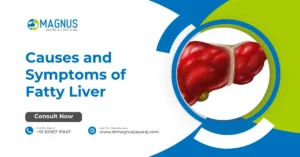When faced with a diagnosis of pancreatic cancer, one of the most pressing concerns for patients and families is understanding the Pancreatic Cancer Survival Rate. This critical topic provides hope and direction for those navigating treatment decisions. As Dr. Magnus Jayaraj Mansard often says, “While statistics may guide us, each individual’s journey is unique and filled with possibility.” In this blog, we’ll explore survival rates, key influencing factors, and how advancements in care are improving outcomes.
Survival Rates for Pancreatic Cancer
Understanding the Survival Rates for Pancreatic Cancer starts with recognizing that survival statistics vary significantly based on factors like age, stage, and overall health. Generally, pancreatic cancer has been considered challenging to treat due to its late detection in many cases. Despite this, there are inspiring stories of survival and medical breakthroughs that offer hope.
Key takeaways:
- Early detection significantly improves outcomes.
- Access to advanced treatments, like targeted therapies, is changing the prognosis.
- Supportive care can make a difference in both survival and quality of life.
What Are the Pancreatic Cancer Survival Rates?
The term Pancreatic Cancer Survival Rate refers to the percentage of patients who live for a specific period after diagnosis. Often expressed in five-year increments, these rates provide a benchmark for understanding how treatments and care approaches are improving over time. For example, the five-year survival rate for early-stage pancreatic cancer is notably higher than for advanced stages.
While statistics provide a general outlook, it is essential to note that these numbers cannot predict individual outcomes. Personalized treatment plans tailored to the patient’s condition and overall health are crucial.
Types of Pancreatic Cancer
Pancreatic cancer is not a single disease but includes several types:
- Exocrine tumors: The most common form, often diagnosed late due to subtle symptoms.
- Neuroendocrine tumors: Less common but with generally better outcomes.
Knowing the type of pancreatic cancer is crucial because treatment options and Survival for Pancreatic Cancer vary widely. Neuroendocrine tumors, for instance, have different biological behaviors and may respond better to certain therapies.

Survival for All Stages of Pancreatic Cancer
When considering Survival for Pancreatic Cancer, it’s essential to understand the different stages:
- Localized Stage: Cancer is confined to the pancreas, and survival rates are higher due to the potential for surgical removal. The five-year survival rate for this stage can be as high as 40%.
- Regional Stage: Cancer has spread to nearby lymph nodes. Survival rates for this stage are lower but can still be improved with a combination of surgery, chemotherapy, and radiation.
- Distant Stage: Cancer has metastasized to other parts of the body, significantly impacting survival. Despite the challenges, advancements in immunotherapy and clinical trials offer new avenues of hope.
Newer therapies are improving Pancreatic Cancer Survival Rates by Age and stage, making it imperative to explore all available options.
What is a 5-Year Relative Survival Rate?
The 5-year relative survival rate compares the survival of people with pancreatic cancer to that of the general population. For example, if the survival rate is 20%, this means 20% of people with pancreatic cancer are expected to live five years compared to individuals without the disease.
This metric provides a clearer understanding of how treatments are improving over time. However, it is essential to remember that individual survival depends on numerous factors, including the patient’s age, overall health, and treatment plan.
Where Do These Numbers Come From?
Survival data is collected from large-scale studies and cancer registries, reflecting past outcomes. It’s essential to remember that these numbers do not predict individual experiences but provide a general guide. Advances in medicine mean that current patients often benefit from newer and more effective treatments than those reflected in older statistics.
What Is the Pancreatic Cancer Survival Rate by Stage?
The Pancreatic Cancer Survival Rate differs significantly by stage:
- Stage I: Localized cancer has the highest survival rates. Surgical removal combined with chemotherapy can offer long-term survival for many patients.
- Stage II and III: Regional spread decreases survival rates, but aggressive treatment approaches, including targeted therapy, are improving outcomes.
- Stage IV: Metastatic cancer has the lowest survival rates, though innovative treatments like immunotherapy and precision medicine are offering new hope.
The key to improving these outcomes lies in early detection and comprehensive care plans that address the unique needs of each patient.
Pancreatic Cancer Survival Rates by Age
Age is a critical factor in determining Pancreatic Cancer Survival Rates by Age:
- Younger patients generally have higher survival rates due to better overall health and fewer comorbidities. For instance, individuals under 50 often experience better outcomes with aggressive treatments.
- Older adults may face additional challenges, such as pre-existing health conditions, but personalized care plans can significantly improve outcomes. Emphasizing quality of life alongside treatment effectiveness is crucial.
Factors Affecting Survival for Pancreatic Cancer
Several factors influence the Survival for Pancreatic Cancer:
- Early Detection: Regular screenings for high-risk individuals can lead to earlier diagnoses, significantly improving survival rates.
- Access to Treatment: Availability of advanced treatments like immunotherapy and clinical trials can make a substantial difference.
- Lifestyle Changes: Maintaining a healthy diet, exercising regularly, and quitting smoking can enhance treatment responses and improve overall health.
- Support Networks: Emotional and psychological support plays a vital role in improving quality of life and survival. Patients with strong support systems often report better outcomes.
Pancreatic Cancer Survival Rate Facts
- Pancreatic Cancer Survival Rate is among the lowest of all cancers.
- The 5-year Survival Rates for Pancreatic Cancer is around 11%.
- Pancreatic cancer survival rates by age decrease with older patients.
- Early-stage Survival for pancreatic cancer is higher than in advanced stages.
- Pancreatic Cancer Survival Rate is higher if detected before spreading.
- The 1-year Survival for pancreatic cancer is about 20-25%.
- Pancreatic cancer survival rates by age show that younger patients fare better.
- Advanced-stage Pancreatic Cancer Survival Rate is under 3%.
- Improvements in treatment impact Survival Rates for Pancreatic Cancer.
- Pancreatic cancer survival rates by age vary based on health conditions.
Improving the Pancreatic Cancer Survival Rate
Dr. Magnus Jayaraj Mansard emphasizes that improving the Pancreatic Cancer Survival Rate requires a multifaceted approach:
- Research and Innovation: Supporting studies on novel treatments and early detection methods is essential.
- Patient Advocacy: Ensuring equitable access to high-quality care can improve outcomes for underserved populations.
- Holistic Care: Addressing physical, emotional, and mental well-being creates a comprehensive approach to treatment.
- Education and Awareness: Promoting awareness of symptoms and the importance of timely medical attention can lead to earlier diagnoses.
Key strategies include:
- Investing in cutting-edge technologies like robotic surgery and precision medicine.
- Collaborating with cancer centers to expand clinical trial access.
- Educating patients on symptom recognition and the importance of routine check-ups.
Beyond Statistics: A Personal Perspective
While survival rates provide a foundation, each patient’s story is unique. Families and caregivers play a pivotal role in fostering hope and resilience. Encouraging patients to celebrate small victories and seek comprehensive care that addresses both physical and emotional needs is vital.
Patients are more than numbers. They are individuals with stories of courage, resilience, and determination. By focusing on personalized care and leveraging the latest advancements, we can continue to improve the Pancreatic Cancer Survival Rate and provide patients with the best possible outcomes.
Conclusion
The Pancreatic Cancer Survival Rate is a complex and deeply personal topic, with numbers that provide only a partial picture. As Dr. Magnus Jayaraj Mansard often reminds patients, “Your story is more than statistics; it’s about resilience and finding the best care possible.
Read also Pancreas Surgery in Chennai.




